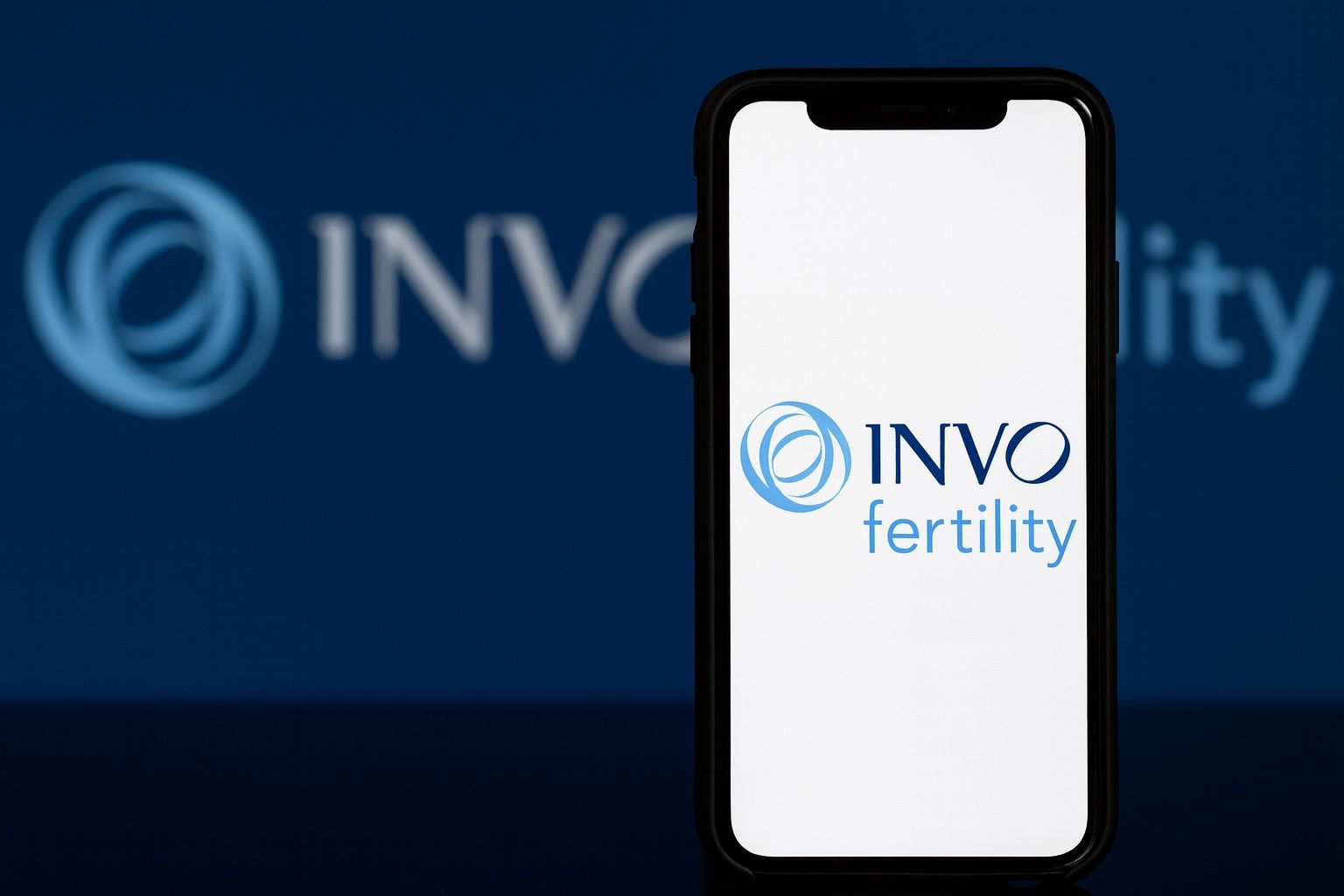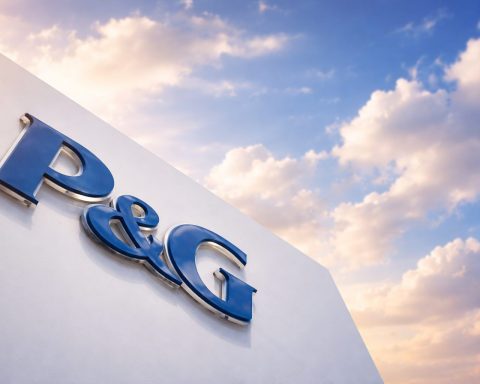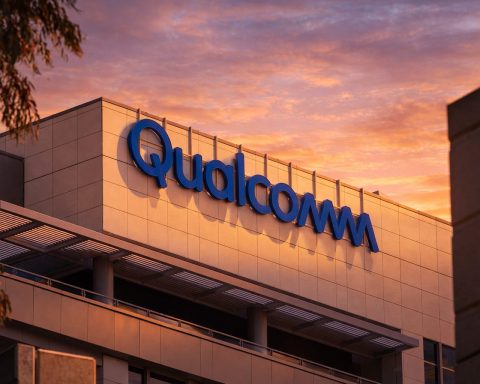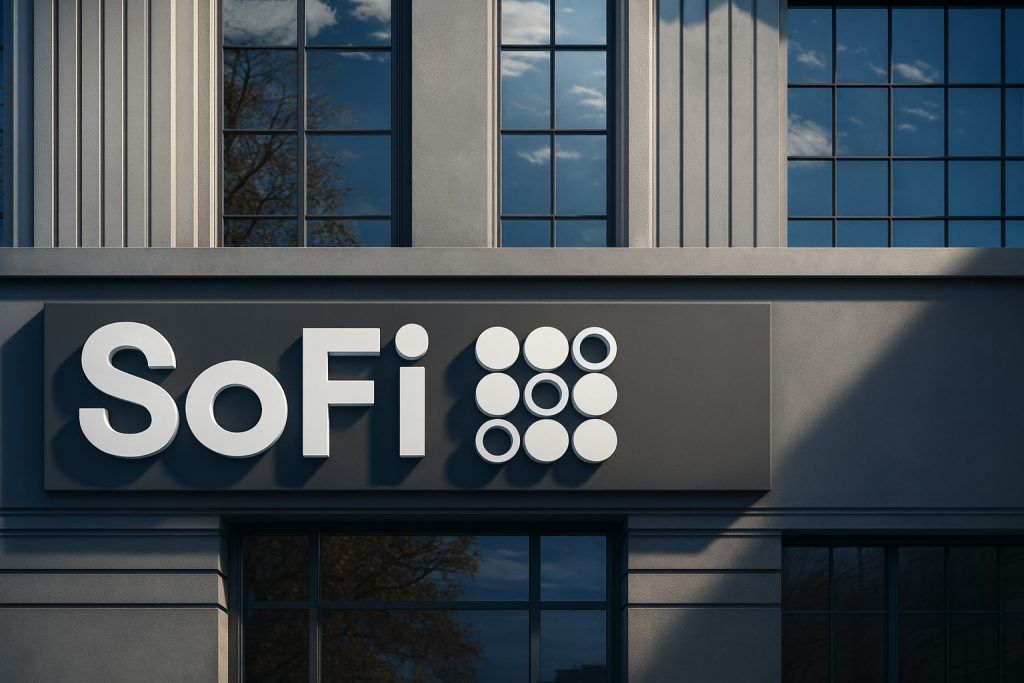- Skyrocketing Stock: INVO Fertility’s share price almost doubled on Oct. 16, 2025, leaping ~90% to $1.43 by the close (after briefly topping $2 intraday) [1].
- Heavy Trading & Volatility: Volume exploded to over 108 million shares (vs ~5.5 million float) amid the frenzy [2]. The following day, INVO gave back ~30% in early trading as profit-takers cashed out [3], underscoring its extreme volatility.
- Fertility Buzz & Policy Tailwinds: The rally came as fertility stocks surged on news of a White House plan to expand IVF access [4]. Investors are betting on a booming fertility market – and viewing INVO as a potential beneficiary of these sector-wide tailwinds.
- Fresh Funding, Possible Dilution: INVO raised $200,000 this week via a private preferred share sale to an existing investor [5]. It also filed to register ~8.35 million shares for resale (per an Oct. 14 SEC filing) [6] – moves that shore up a bit of cash but could signal future dilution of the stock.
- Challenges vs. Optimism: INVO remains unprofitable (Q2 net loss of $3.2 million) and cash-strapped (current ratio ~0.1) [7]. Yet management touts growth ahead (~9.7% annual revenue rise projected, above industry average) [8], a new patent extending its IVF technology’s protection to 2040 [9], and surging IVF demand as reasons for long-term optimism.
Stock Price Surge and Aftermath
INVO Fertility’s stock took Wall Street by surprise this week with a massive one-day surge. On October 16, shares of the micro-cap fertility clinic operator opened around $0.75 and skyrocketed nearly 90% by day’s end, closing at approximately $1.43 [10]. Intra-day, the price briefly hit $2+ per share, a huge jump from the prior day’s close under $0.80 [11]. To put this in perspective, such a single-day leap is virtually unheard of for most stocks – even in the volatile biotech space – and far outpaced broader market moves.
Trading volume spiked astronomically during the rally. More than 108 million shares changed hands on Oct. 16 [12], dwarfing INVO’s typical daily volume of only ~33,000 shares and even exceeding the company’s entire public float (roughly 5.5 million shares outstanding) dozens of times over [13]. This flood of trading interest suggests a speculative feeding frenzy: traders piled into the low-priced stock en masse, driving it higher in a feedback loop. Notably, short interest in INVO was minimal (under 1% of shares) heading into the move [14], indicating this was not a classic short squeeze but rather a momentum-driven burst.
By the next morning, however, the aftershocks of such a dramatic rise began to show. In pre-market trading on October 17, INVO’s stock tumbled about 34% to around $0.92 [15] as early investors took profits. Once the regular session opened Friday, shares continued to fluctuate, at one point hovering near $1 (still well above where they started before the surge, but far below the $2+ peak). This whipsaw action highlights the extreme volatility inherent in micro-cap stocks like INVO – rapid booms can be followed by swift pullbacks. Even after nearly doubling in price, INVO’s stock remains about 98% below its 52-week high of $42.48 (reached before a major restructuring) [16]. Year-to-date, thanks to this week’s jump, the stock has roughly doubled (+95%) in 2025 [17] – an impressive feat, though it comes after a long slide and heavy losses in prior periods.
Market veterans caution that such roller-coaster moves often don’t last. “It’s not unusual for a stock like INVO to give back a chunk of gains after a sudden spike, as early traders lock in profits,” one analyst noted, emphasizing that the high-risk, high-reward nature of penny stocks means big pops can reverse quickly [18] [19]. The key question is whether INVO can capitalize on the attention and sector momentum or if this surge will be a short-lived blip.
What’s Fueling the Frenzy? Policy News & Fertility Sector Boom
Importantly, nothing fundamentally earth-shattering changed overnight within INVO Fertility’s own operations to directly trigger an 85–90% price pop. Instead, the broader fertility sector buzz appears to have set the stage. On Oct. 16, reports emerged that the White House is preparing a proposal to make in vitro fertilization (IVF) more accessible nationwide [20]. The plan would encourage employers to offer fertility treatment coverage (including IVF) as a separate benefit – akin to dental or vision plans – rather than leaving IVF under standard health insurance [21]. This policy push aligns with government efforts to recognize infertility as a public health issue and reduce IVF costs for patients [22] [23]. In fact, the same day, U.S. President Donald Trump announced a deal with Merck KGaA to slash prices on popular IVF drugs by up to 84% for consumers, in exchange for certain trade protections [24] [25]. “We’re taking historic steps to vastly expand access to insurance coverage for fertility care, including IVF,” Trump said from the Oval Office, underscoring the administration’s commitment to tackling high fertility treatment costs [26].
This wave of pro-fertility news immediately lifted the stocks of companies in the space. Shares of fertility-benefits manager Progyny (NASDAQ: PGNY) – a ~$1.8 billion company that helps employers provide IVF benefits – jumped on Oct. 16 upon the White House news [27]. Investors reasoned that if more employers cover IVF, firms like Progyny could see a surge in business [28]. That enthusiasm spilled over to smaller players as well: traders looked at INVO Fertility, which operates IVF clinics directly, as another potential beneficiary of expanded fertility access. In other words, INVO became a speculative “play” on the fertility boom story. “Shares of fertility stocks traded sharply higher on Thursday following [the] report,” noted Benzinga, referring to the White House IVF initiative [29]. INVO’s huge rally thus appears to be a case of sector momentum amplifying interest in a tiny stock that normally flies under the radar.
Beyond policy, the fertility industry’s overall outlook is undeniably robust. Market research indicates the global fertility market – spanning IVF procedures, fertility drugs, clinics, and related technology – is on track to grow from about $39 billion in 2025 to over $85.5 billion by 2034 [30]. That’s roughly a 9% compound annual growth rate (CAGR)】, outpacing many other healthcare sectors [31]. Several factors are driving this boom: more couples are delaying parenthood, which increases demand for assisted reproductive technologies; infertility rates have inched up (often due to higher maternal ages and other health factors); and social acceptance of fertility treatments is increasing, reducing stigma. Meanwhile, rapid innovation is making IVF and other treatments more effective and accessible – fertility clinics are adopting AI tools and advanced genetic testing to improve IVF success rates, and offering new services like egg freezing to cater to evolving family planning needs [32].
INVO Fertility itself is tapping into some of these trends with its unique technology. The company’s proprietary INVOcell® device enables an IVF variant where early-stage embryo incubation occurs inside the patient’s body (intravaginally) rather than in a laboratory. This approach aims to lower costs and simplify the IVF process. Notably, INVO just received a new patent extending the INVOcell technology’s U.S. protection through 2040 [33], which strengthens its intellectual property moat. “Our enhanced INVOcell design simplifies the device based on embryologist feedback,” CEO Steve Shum noted, adding that the innovation underscores INVO’s dual role as both a clinic operator and a technology developer [34].
The investment community’s interest in “femtech” and fertility has been mounting. Just this week, for example, telehealth provider Hims & Hers Health (NYSE: HIMS) – which offers online women’s and family health services – saw its stock spike ~16% in a day after announcing a new menopause care program [35]. That jump, much like INVO’s, came on heavy volume and reflected investors’ hunger for companies addressing women’s health needs. “The episode underscores how hot the femtech and fertility segment is right now,” observed TechStock², noting that even larger healthcare players are partnering with fertility startups or investing in fertility R&D [36] [37]. In this favorable environment, INVO Fertility’s tiny size could be a double-edged sword – an opportunity to ride a big wave in a growing market, but also pressure to execute and stand out before larger competitors or new entrants capture the growth.
Recent Catalysts and Company Updates
While the broader fertility boom provided a tailwind, INVO Fertility also had a string of company-specific developments in recent days that improved sentiment and may have primed the stock for its leap. In the past week, INVO has taken steps to bolster its financial position (albeit modestly) and resolve lingering issues:
- Cash Infusion from Investor: An existing institutional investor exercised a right to purchase additional shares of INVO’s Series C-2 Convertible Preferred Stock, injecting $200,000 in cash into the company [38]. The investor bought 200 preferred shares (at $1,000 each) under a prior agreement – essentially a vote of confidence from an insider. This small capital boost adjusted the conversion price on that preferred tranche to about $0.66 per common share [39]. $200k is not a huge sum, but for a micro-cap like INVO (market cap only ~$3–4 million), every bit of liquidity helps. The funding slightly strengthens INVO’s cash reserves as it pursues expansion, and it signaled to the market that at least one stakeholder was willing to put in more money. (This transaction was disclosed in an 8-K filed Oct. 10.)
- Registered Shares & Potential Dilution: On Oct. 14, INVO filed an S-1 registration statement with the SEC to register roughly 8.35 million common shares for resale by certain existing holders [40]. These shares are tied to recent financing deals (like convertible preferred stock and debentures that can convert into stock). Registering them means those investors can freely sell their shares on the open market once the S-1 is effective. Such filings often raise dilution concerns, since a large block of new shares could hit the market. Indeed, INVO’s total outstanding share count could rise substantially if all those convertible securities turn into common stock. However, some analysts saw a silver lining: by proactively registering shares, INVO is increasing transparency about its capital structure and removing an overhang (uncertainty about when those shares might be sold) [41]. In other words, the market can now better price in the potential dilution. This step could be viewed as “cleaning up” the capital structure, possibly making it easier for INVO to raise new funding down the line once the existing obligations are clear.
- Legal Settlement and Debt Reduction: INVO has been tackling legacy financial issues. Notably, the company finalized a $6 million legal settlement with Dr. Elizabeth Pritts (and her trust) related to INVO’s acquisition of the Wisconsin Fertility Institute [42]. This settlement, announced in early October, puts to rest a major lawsuit and removes a cloud of uncertainty hanging over INVO’s flagship clinic acquisition. At the same time, INVO moved to reduce its debt load: it reached an agreement with a lender, Five Narrow Lane LP, to exchange a senior secured debenture for additional shares of Series C-2 Preferred Stock [43]. In plain terms, a creditor agreed to swap the debt owed by INVO into equity, effectively extinguishing that debt. This improves INVO’s balance sheet (lowering liabilities), though it does dilute shareholders by increasing preferred equity. The company also amended a revenue-sharing loan with another partner (Decathlon Alpha) involving $1.5 million, likely to get more favorable terms [44]. Collectively, settling litigation and converting debt to equity are signs that INVO is trying to shore up its finances and address financial risks proactively.
- Operational Focus and Oversight: Amid these moves, INVO also made a corporate governance change – hiring a new independent auditor. In late September, the board dismissed its prior auditor (M&K CPAs) and approved WithumSmith+Brown, PC as the new firm to audit INVO’s 2025 financial statements [45]. Bringing in a reputable auditor could enhance financial oversight and credibility with investors going forward. Additionally, over the summer INVO executed a 1-for-3 reverse stock split (effective July 21, 2025) to boost its share price and regain Nasdaq compliance [46]. Every 3 shares were merged into 1, temporarily lifting the stock above $1 to meet listing requirements. (The stock, however, drifted back under $1 in subsequent months despite the split [47].) Shareholders also approved a suite of proposals at the July annual meeting to support management’s turnaround plans [48]. This included authorizing more flexibility in the preferred stock deals – allowing those investors to inject more cash or swap debt for equity as needed [49], which we’ve now seen put into action. All these efforts signal that INVO’s leadership is actively restructuring and refocusing the company on its core fertility clinic business.
In summary, INVO Fertility has been busy adjusting its sails in 2025 – raising a bit of new capital, settling disputes, trimming debt, and streamlining operations. None of these company-specific events alone explain an abrupt 90% stock jump. However, together they paint a picture of a company attempting to turn a corner and clean up its finances [50]. So when the external catalyst of bullish IVF sector news hit, INVO was arguably a powder keg of potential, ready to catch fire. Traders likely saw a beaten-down company that had just removed some big roadblocks (like the lawsuit and debt) and secured a small infusion of cash – making it a tempting target in a suddenly hot sector. The groundwork laid by INVO’s recent actions gave speculators a story (however speculative) to latch onto during the frenzy.
Management’s Take and Analyst Insights
Company leadership, for its part, has expressed confidence that these strategic moves will eventually pay off. Steve Shum, INVO’s CEO, emphasizes that the company is now 100% focused on fertility services after a period of reorganization. Earlier this year, INVO separated from a biotech arm (formerly known as NAYA Therapeutics), and since then, “the company is fully refocused exclusively on our fertility operations and making progress on growth initiatives,” Shum said in the second-quarter report [51]. He highlighted new offerings like telehealth consultations and PRP therapy (platelet-rich plasma treatments) at INVO’s clinics as examples of innovation. “We have expanded our service offering to include new telehealth options and PRP therapy, demonstrating our commitment to quality patient-centered care,” Shum noted [52]. He also reiterated INVO’s “dual mission” – acting both as “an innovator of cutting-edge fertility solutions and a provider of compassionate clinical care.” This refers to INVO’s unique model of not only operating clinics (currently in Atlanta and Madison) but also developing proprietary fertility technology (like the INVOcell device) that it can deploy in-house or potentially sell to other clinics [53].
On execution, management claims to be keeping a tight ship financially. “We remain committed to maintaining a highly efficient and scalable operating structure while layering in complementary and accretive revenue-generating businesses and technologies,” Shum said, indicating plans to grow through strategic acquisitions or partnerships if opportunities arise [54]. In practice, this could mean INVO might try to acquire additional fertility clinics or related services to boost revenue – but such moves would likely require raising more capital. A recent presentation by the company hinted at exploring joint ventures and clinic acquisitions as part of its expansion, assuming it can secure funding [55] [56].
Outside analysts and experts have a cautiously optimistic view on INVO’s prospects. Market data aggregated by Simply Wall St shows analysts project INVO’s revenue to grow about 9.7% per year on average over the next three years, slightly outpacing the ~8.2% industry-average growth rate for fertility and medical device companies [57]. This suggests some confidence that INVO can grow its top line faster than the market, perhaps by filling unmet demand or opening new centers. However, the company’s fragile financial position is a major caveat frequently mentioned. As of Q2 2025, INVO had a trailing 12-month EBITDA of –$8.2 million and that precarious current ratio near 0.1 (meaning current liabilities vastly exceed current assets) [58]. One Investing.com analysis flatly described these as “significant liquidity challenges”, warning that without additional funding or improved cash flow, INVO could struggle to meet its obligations [59]. In short, the turnaround plan has little room for error – the company likely needs to both ramp up revenue and raise more cash to stay afloat long enough to see its strategy through.
When it comes to stock valuation and forecasts, the signals are mixed and based on scant data. INVO’s market capitalization has fluctuated between roughly $3 million and $7 million this week [60], so it’s extremely small. Traditional Wall Street coverage is minimal – by some counts only one lone analyst officially covers the stock, with a nominal “Buy” rating on it [61]. That lack of coverage means price targets can vary wildly on smaller investor platforms. For instance, one stock research site (Fintel/ChartMill) cites an average 1-year price target of about $18.36 for INVO [62], implying over +2,000% upside from current levels. (This seems to be based on a very bullish scenario and perhaps outdated assumptions; the range of targets was $18.18 to $18.90 [63].) Another source noted that 4 out of 5 micro-cap analysts who recently issued opinions rated INVO a Buy [64]. Such rosy projections, however, should be taken with a grain of salt. Reaching an $18 share price would likely require extraordinary execution – i.e. INVO opening multiple new clinics, dramatically boosting revenue, and possibly achieving profitability, all in short order. Given that the stock is under $2 and the firm is still losing money, those targets appear aspirational at best. As one observer put it, these lofty estimates “assume successful growth and perhaps further clinic acquisitions… [They] appear more aspirational than realistic, given the company’s hurdles” [65]. The consensus among serious analysts is that INVO is a high-risk, high-reward story: there is real potential if the company can ride the fertility wave and execute its plan, but significant risks if it cannot stabilize its finances soon [66].
Outlook – Can INVO Ride the IVF Wave?
Looking ahead, INVO Fertility’s fate will depend on turning ambitious plans into tangible results. In the near term, a top priority is improving its financial stability. The recent settlement and debt-for-equity swap removed some liabilities, but INVO still may need additional capital to fund growth and operations in the coming year. Barring a sudden jump in patient volume or revenue, many expect the company will have to either take on new investors, issue more stock, or secure loans to bolster its cash reserves. The company’s S-1 filing in October hints that it is preparing for the possibility of share issuance (dilution) to raise funds [67]. INVO’s management will likely try to time any financing to coincide with positive news (such as improved earnings or a new clinic deal) to mitigate the impact on the stock price.
Operationally, the focus is on expanding the clinic footprint and services. INVO currently operates two fertility clinics (one in Atlanta, Georgia and one in Madison, Wisconsin – the latter via the Wisconsin Fertility Institute acquisition). Growing revenue will depend on increasing patient throughput at these locations and potentially opening or acquiring additional clinics in new regions [68]. The company has signaled interest in a “roll-up” strategy – acquiring profitable independent fertility clinics or entering joint ventures – to scale up faster [69]. Any such move, if executed, could be a catalyst for the stock, as it would immediately add revenue (and hopefully profits) to INVO’s financials. Of course, acquisitions require capital, circling back to the funding challenge.
On the technology front, INVO will continue to leverage its INVOcell device as a differentiator. The extended patent protection to 2040 means INVO has the runway to promote this intravaginal IVF approach without direct copycat competition in the U.S. [70]. The company has been training outside physicians on how to use INVOcell and incorporate the technique into their practices [71]. Down the line, INVO could potentially license the INVOcell technology or sell the devices to other fertility clinics as an additional revenue stream, beyond just its own clinics’ usage. Success in this arena – getting wider adoption of INVOcell – could validate INVO’s model of offering a more affordable, patient-friendly IVF alternative [72]. It’s a unique angle that, if popularized, might allow INVO to carve out a niche in an increasingly competitive fertility market.
The big unknown is when (or if) INVO will achieve profitability. As of the latest quarter (Q2 2025), the company’s operations are still deep in the red – posting a net loss of about $3.2 million [73]. On an adjusted basis (excluding certain one-time costs), INVO’s EBITDA was around –$0.59 million for Q2 [74], which actually marked an improvement year-over-year. This suggests the core clinic business, while not yet profitable, is inching closer to breakeven if one-time expenses and legacy costs are stripped out. INVO will aim to break into positive EBITDA territory by late 2025 or 2026 through a combination of revenue growth and cost control. Management has indicated that reaching cash-flow breakeven in 2026 is a key goal [75]. Hitting that milestone would be a major validation of the turnaround – and could attract a broader set of investors who have so far shied away from the cash-burning startup. Conversely, if losses continue at the current rate, INVO may be forced to raise money on less favorable terms, diluting existing shareholders further [76].
Market sentiment around INVO will also depend on external factors. Any continued favorable policy developments – for instance, if the White House formally implements the IVF coverage plan or additional states mandate fertility coverage – could boost interest in fertility stocks across the board, INVO included. Heightened media focus on declining birth rates and the growing use of IVF could likewise keep the sector in the spotlight. On the flip side, a downturn in the overall stock market or a shift to risk-off sentiment would likely hit micro-caps like INVO hardest. These low-priced stocks often swing more on sentiment than fundamentals in the short term [77]. After INVO’s dizzying 90% jump, it wouldn’t be surprising to see continued price swings – sharp rallies or steep slides – as traders trade in and out. Indeed, as noted, the stock already retreated significantly after the initial spike, showing how quickly momentum can cool.
For public investors watching this story, the key takeaway is to balance the excitement with realism. INVO Fertility’s nearly parabolic rise highlights the strong enthusiasm around fertility-related companies right now, fueled by real trends like higher IVF demand and supportive policy moves. The company has positioned itself at the nexus of this fertility boom, with a compelling mission of expanding access to fertility care through its clinics and technology. Its recent actions – resolving disputes, raising a bit of cash, securing intellectual property, and doubling down on core operations – are steps in the right direction. However, INVO remains a very small player facing a cash crunch, and it operates in a field with much larger competitors and inherent scientific uncertainties. The stock’s wild ride this week exemplifies a classic speculative “story stock” scenario: bulls are betting that INVO can ride the fertility wave and execute a turnaround that multiplies its value, while bears point out that the company still has to prove it can convert today’s favorable trends into sustainable profits [78]. In the coming quarters, look for updates on clinic growth, any new partnerships or insurance coverage wins, and progress toward breakeven as critical indicators of INVO’s trajectory. Bottom line: the fertility industry is hotter than ever, and INVO Fertility just got a burst of attention – now it must deliver on its promise to truly capitalize on this fertile moment.
Sources: Trading data and market context from Reuters [79] [80] and Benzinga [81]; INVO’s recent SEC filings and financial updates via Investing.com [82] [83]; CEO and management commentary from INVO’s Q2 2025 press release (GlobeNewswire) [84]; analyst forecasts from Simply Wall St [85]; industry growth figures and policy news from GlobeNewswire and GuruFocus [86] [87]; and additional analysis from TS² (TechStock²) fertility industry coverage [88] [89]. All information is current as of October 17, 2025.
References
1. ts2.tech, 2. ts2.tech, 3. www.benzinga.com, 4. www.benzinga.com, 5. ts2.tech, 6. ts2.tech, 7. ts2.tech, 8. ts2.tech, 9. ts2.tech, 10. ts2.tech, 11. ts2.tech, 12. ts2.tech, 13. ts2.tech, 14. ts2.tech, 15. www.benzinga.com, 16. www.investing.com, 17. ts2.tech, 18. www.benzinga.com, 19. ts2.tech, 20. ts2.tech, 21. ts2.tech, 22. ts2.tech, 23. www.reuters.com, 24. www.reuters.com, 25. www.reuters.com, 26. www.reuters.com, 27. ts2.tech, 28. ts2.tech, 29. www.benzinga.com, 30. ts2.tech, 31. ts2.tech, 32. ts2.tech, 33. ts2.tech, 34. ts2.tech, 35. ts2.tech, 36. ts2.tech, 37. ts2.tech, 38. ts2.tech, 39. ts2.tech, 40. ts2.tech, 41. ts2.tech, 42. ts2.tech, 43. ts2.tech, 44. ts2.tech, 45. ts2.tech, 46. ts2.tech, 47. ts2.tech, 48. ts2.tech, 49. ts2.tech, 50. ts2.tech, 51. ts2.tech, 52. ts2.tech, 53. ts2.tech, 54. ts2.tech, 55. ts2.tech, 56. ts2.tech, 57. ts2.tech, 58. ts2.tech, 59. ts2.tech, 60. ts2.tech, 61. ts2.tech, 62. ts2.tech, 63. ts2.tech, 64. ts2.tech, 65. ts2.tech, 66. ts2.tech, 67. ts2.tech, 68. ts2.tech, 69. ts2.tech, 70. ts2.tech, 71. ts2.tech, 72. ts2.tech, 73. ts2.tech, 74. ts2.tech, 75. ts2.tech, 76. ts2.tech, 77. ts2.tech, 78. ts2.tech, 79. ts2.tech, 80. ts2.tech, 81. www.benzinga.com, 82. ts2.tech, 83. ts2.tech, 84. ts2.tech, 85. ts2.tech, 86. ts2.tech, 87. ts2.tech, 88. ts2.tech, 89. ts2.tech







